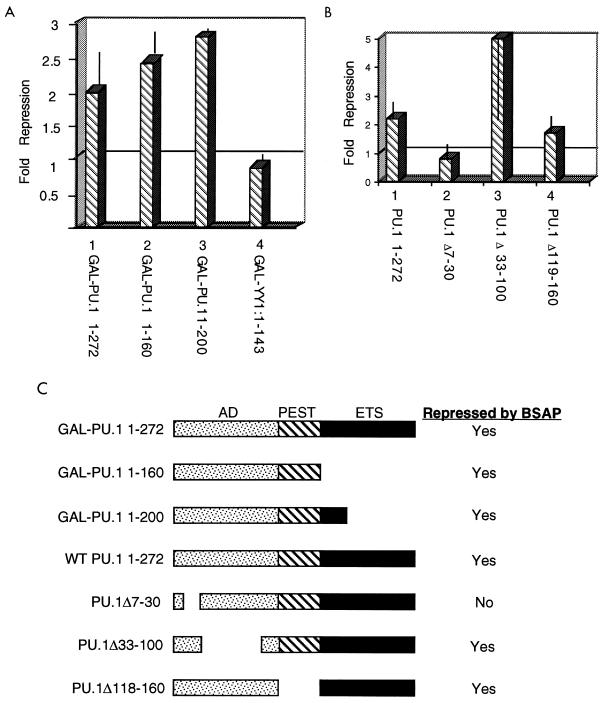FIG. 5.
BSAP repression does not involve the Ets domain and targets a portion of the PU.1 transactivation domain. (A) BSAP-mediated repression does not require the PU.1 Ets domain. NIH 3T3 cells were transfected with a GAL4-responsive reporter (GALE1bCAT) and various GAL-PU.1 or GAL-YY1 fusion constructs. Fold repression in the presence of BSAP is plotted. Histograms that fall below the horizontal line represent no repression by BSAP. Error bars indicate standard deviation. Basal activities of GALPU.1 1–160 and GALPU.1 1–200 were 13- and 7-fold higher, respectively, than that of GALPU.1 1–272. GALYY1 1–143 activity was 1.7-fold higher than that of GALPU.1 1–272. (B) BSAP repression targets a portion of the PU.1 transactivation domain. NIH 3T3 cells were transfected with the (PU.1/Pip)4LBKCAT reporter and plasmids expressing wild-type PU.1 or various PU.1 deletion mutants. Fold repression in the presence of BSAP is plotted. Error bars indicate standard deviation. PU.1Δ7–30 showed 20% of the activity of wild-type PU.1, whereas PU.1Δ33–100 and PU.1Δ118–160 were equivalent to wild-type PU.1. (C) Summary of BSAP repression data. The positions of the PU.1 activation domain (AD), PEST domain, and DNA binding Ets domain are indicated. The ability of BSAP to repress each construct is indicated on the right.

